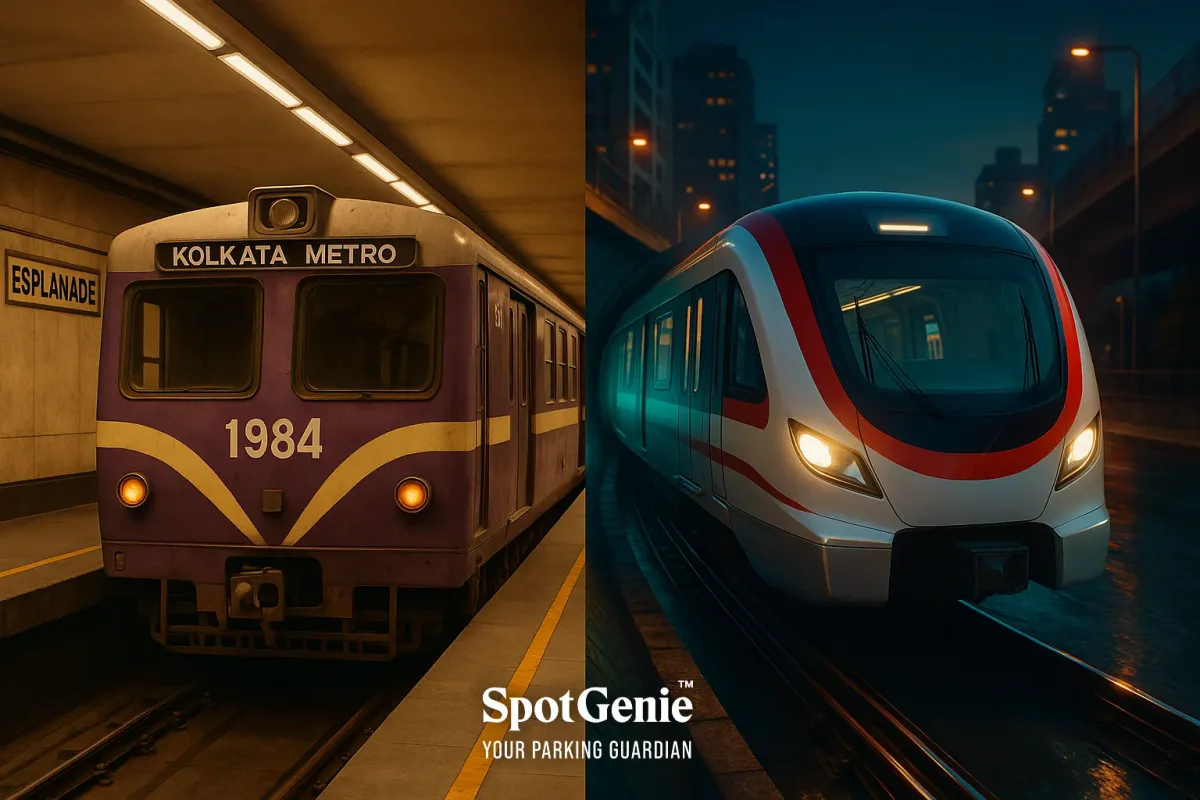SpotGenie Fact – The First Metro Rail in India: Kolkata Metro (1984–Present)
From a bold 1984 debut to a modern network, the Kolkata Metro’s remarkable journey through four decades of change.

From 1984 to Now: The Journey of India’s First Metro Rail
Introduction
When most Indian cities still depended on overcrowded buses and slow trams, Kolkata made history. On 24 October 1984, the city saw the nation’s first metro train glide out of Esplanade station towards Bhowanipore (now Netaji Bhavan). What started as a 3.4 km pilot stretch has now transformed into a growing lifeline for millions, blending nostalgia with modern engineering marvels.
The Beginning – 1984
The idea of a metro in Kolkata was envisioned in the 1960s, with technical guidance from the Soviet Union and East Germany. The initial phase - Esplanade to Bhowanipore - wasn’t just a local achievement but a national first in rapid transit. Passengers experienced something unseen in India: air-conditioned comfort, smooth underground travel, and punctual schedules.
Expansions & Challenges
- 1990s: Gradual extensions took the line to Tollygunge (now Mahanayak Uttam Kumar) by 1995.
- 2000s: Northern stretch reached Dum Dum, improving airport access.
- 2010s: New stations, upgraded rakes, and digital ticketing modernized the network.
- Present: Kolkata Metro has multiple operational lines, including India’s first underwater metro tunnel under the Hooghly River.
Despite political delays, land acquisition hurdles, and engineering challenges, the Kolkata Metro never lost its pioneering spirit.
Unique Facts
- India’s only metro to operate both broad gauge (Line 1) and standard gauge (new lines).
- The only metro in the country with a heritage feel on older stations, complete with vintage murals and tiled walls.
- Underwater stretch between Howrah and Mahakaran is a first for India.
Impact on Kolkata & India
The Kolkata Metro proved that urban mass transit could transform a city’s mobility. It inspired Delhi, Bengaluru, Chennai, and Mumbai to follow suit, becoming the blueprint for India’s metro revolution.
Conclusion
From a modest 3.4 km route in 1984 to a sprawling, technologically advanced network today, the Kolkata Metro stands as a symbol of vision, perseverance, and progress. Next time you step into a metro anywhere in India, remember - it all began under the streets of Kolkata.
Internal Links (SEO-Optimized)
- Learn more about India’s First Electric Train
- Discover India’s Longest Sea Bridge
- SpotGenie helps keep your vehicle safe - Get Your Smart QR Sticker
- Explore India’s Double-Diamond Railway Crossing
Follow us on:
🅾 Instagram |
ⓕ Facebook |
𝕏 X |
▶️ YouTube |
🟢 WhatsApp



